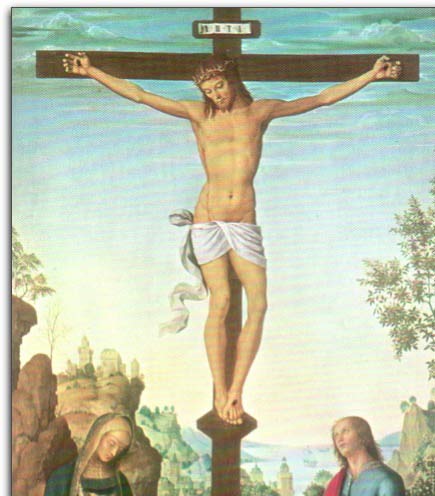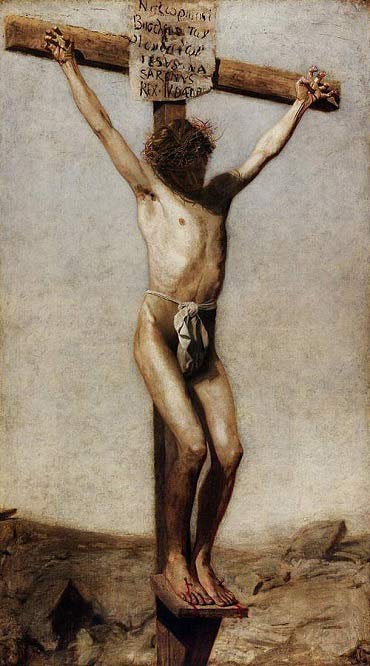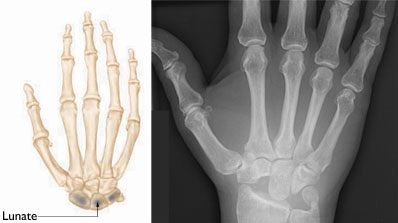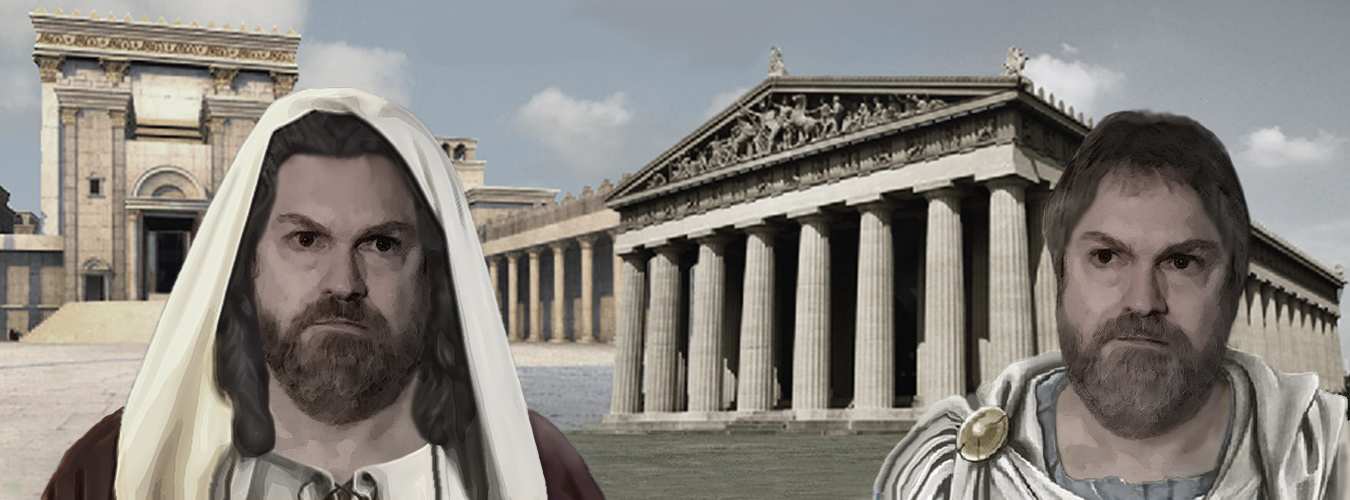In Kenneth Hagin’s book I Believe in Visions he recalled a vision where Jesus appeared to him and showed him the print of the nails in His hands.
“Then the Lord said to me, “Stretch forth thine hand!” He held His own hands out before Him and I looked into them. For some reason I expected to see a scar in each hand where the nails had pierced His flesh. I should have known better, but many times we get ideas that are not really scriptural, yet they are accepted beliefs. Instead of scars I saw in the palms of His hands the wounds of the crucifixion — three-cornered, jagged holes. Each hole was large enough for me to have put my finger in it. I could see light on the other side of the hole.”
One WoF opponent observed:
“…Jesus could never have shown Hagin the alleged holes in His palms. As any student of Scripture and history knows, the nails were driven through Christ’s wrists as opposed to His palms. The Greek word used in the text (cheir) actually refers to the entire forearm, including the hand. In addition to Scripture, archaeology and medicine provide strong evidence that crucified individuals could not have been nailed through the palms of their hands: The weight of the body would have ripped the nails right through the fingers of the hands.”
He then adds …
“Dr. Pierre Barbet was the chief surgeon at St. Joseph’s Hospital in Paris. He performed experiments on cadavers in the 1930s which showed that crucifixion by nails through the palms would not have supported the weight of the body on the cross. The nails would have ripped through the flesh.”
There are several assumptions in his observations that I would like to discuss. First, he assumes that the translators all incorrectly translated the Greek word cheir as “hands” instead of “forearms” or “wrists” as was the case with several translations of Acts 12:7 when the chains fell off of Peter’s wrists. In each New Testament reference to Jesus’ crucified and resurrected body the word “hands” is used. Link 1 Link 2 Second, this critic makes the same assumption about the Hebrew word yad in Psalm 22:16, which was a prophetic reference to The Crucifixion. Again, the translators all used “hands”. Link
Dogs surround me, a pack of villains encircles me; they pierce my hands and my feet.
Third, he assumes that there was nothing other than nails to support the weight of Jesus’ body. From Wikipedia’s page on “Crucifixion”:
“The person executed may have been attached to the cross by rope, though nails are mentioned in a passage by the Judean historian Josephus, where he states that at the Siege of Jerusalem, “the soldiers out of rage and hatred, nailed those they caught, one after one way, and another after another, to the crosses, by way of jest.”
and …
An experiment that was the subject of a documentary on the National Geographic Channel’s Quest For Truth: The Crucifixion, showed that nailed feet provided enough support for the body, and that the hands could have been merely tied. Nailing the feet to the side of the cross relieves strain on the wrists by placing most of the weight on the lower body. Another possibility, suggested by Frederick Zugibe, is that the nails may have been driven in at an angle, entering in the palm in the crease that delineates the bulky region at the base of the thumb, and exiting in the wrist, passing through the carpal tunnel.
A foot-rest (suppedaneum) attached to the cross, perhaps for the purpose of taking the person’s weight off the wrists, is sometimes included in representations of the crucifixion of Jesus, but is not discussed in ancient sources. Some scholars interpret the Alexamenos graffito, the earliest surviving depiction of the Crucifixion, as including such a foot-rest. Ancient sources also mention the “sedile”, a small seat attached to the front of the cross, about halfway down, which could have served a similar purpose.
So there’s no reason to assume that ropes, a foot-rest, or even a “sedile” could not have been used. Peter said that Jesus was hung on a tree (or cross, depending on the translation) in Acts 5:30 and Acts 10:39. Hanging is done with ropes, which would suggest that ropes were indeed used. In fact, many paintings of The Crucifixion included ropes and foot-rests.




While these paintings certainly don’t prove that Jesus was crucified with any of these methods, they do prove that the artists were aware of the fact that such methods were used.
Fourth, he assumes that no bones would have been broken had Jesus’ wrists been pierced. John 19:36 tells us that none of His bones were broken. That’s unlikely, when one considers the anatomy of the wrists. 
As you can see from the image above, there no space between the bones of the wrists like there is between the bones of the palms. And finally, he assumes that the findings of Dr. Barbet are indisputable. They’re not. Google the subject and you’ll find many opinions stating that the tendons of the hands would be sufficient to support the body’s weight. I’m not a medical person so I have no opinion from that angle, but apparently there are some medical people who disagree with Dr. Barbet. Link 1 Link 2
In summary, we don’t have enough details to know the exact means by which Jesus was crucified, but we know that there were several possibilities. He could have been crucified with nails only, nails and ropes, nails and a foot rest, nails and a sedile, or all of the above. None of those options excludes the possibility of nails being driven through the palms of His hands. Once again a WoF critic has allowed their disdain for the theology of the WoF to skew their analysis and impact their conclusions. There is absolutely no reason to reject Kenneth Hagin’s account of his vision of Jesus on the basis of historical accounts of crucifixions, anatomy, or on the basis of biblical interpretation.

